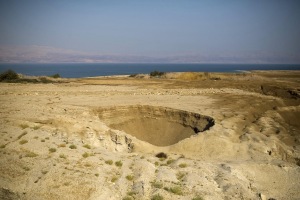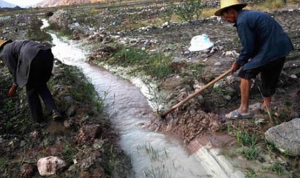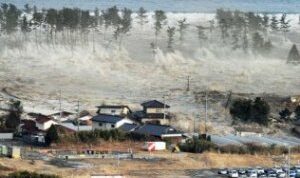 The Dead Sea is shrinking, and as its waters vanish at a rate of more than one metre a year, hundreds of sinkholes – some the size of a basketball court, others two storeys deep – are devouring land where the shoreline once stood.
The Dead Sea is shrinking, and as its waters vanish at a rate of more than one metre a year, hundreds of sinkholes – some the size of a basketball court, others two storeys deep – are devouring land where the shoreline once stood.
A section of a two-lane desert road – a main north-south artery that cuts through Israel and the Palestinian West Bank – was shut down six months ago when a gaping hole opened up beneath the asphalt.
Once a rarity, hundreds of new sinkholes are appearing every year, and the rate is expected to rise. Officials have not come up with a figure for the extent of the damage, but power lines have been downed, caravan and bungalows engulfed. On at least one occasion, hikers were injured falling into one of the pits.
“It’s not a problem we can handle alone,” said Dov Litvinoff, mayor of the Tamar region that covers the southern half of the Dead Sea in Israel.
The sea is shrinking mainly because its natural water sources, flowing south through the River Jordan valley from Syria and Lebanon, have been diverted en route for farming and drinking water.
Relocating infrastructure is a temporary solution, the mayor said. The sinkholes will only stop when the waters of the Dead Sea are restored, and that requires an international initiative, since it also borders Jordan and the West Bank.
Even with everyone on board, Litvinoff said, it would take decades to reverse the ecological damage to the ancient salt lake.
The World Bank is promoting a much-discussed project to desalinate waters from the Red Sea to pump the brine by-product into the Dead Sea. However it’s unclear whether the project, described by environmental groups as a drop in a bucket, will take off.
The Dead Sea is a favourite spot for tourists, who enjoy floating effortlessly in its highly salted waters and treating their skin with the mineral-rich mud lining its shores. But two popular beaches have been forced to close and officials fear tourism could start to be affected more seriously.
[Best_Wordpress_Gallery id=”1″ gal_title=”DeadSea”]




